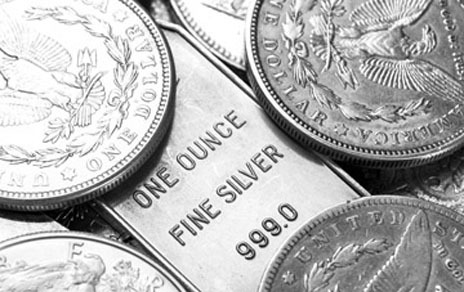

Silver prices are on the move to the top of their current trading range, looking to test resistance around $22 an ounce. Although the precious metal is supported by long-term fundamentals, commodity analysts at BMO Capital Markets said that growing recessionary risks could weigh on prices in the near term.
.jpg)
While silver is considered a monetary metal, the analysts noted that its role as an industrial metal had been a dominant factor. They added that so far this year, silver has been trading as a risk-on asset, "which does not bode well for prices if economic headwinds mount."
They added that as recessionary pressure build, gold prices will continue to outperform silver.
The analysts noted that investors' preference for gold over silver can be seen in the paper market as demand for gold-backed exchange-traded products has outperformed silver-backed exchange-traded products.
"Despite gold-backed exchange-traded funds (ETFs) seeing net inflows of 225t year to date, owing to multi-decade high inflation, geopolitical tensions, and mounting recessionary fears, silver ETPs have seen net outflows of 269t since the start of the year," the analysts said.
Lukewarm investor interest in silver can also be seen in the physical market. The Canadian bank said that demand for silver bars and coins is expected to rise by 213 million ounces this year, down nearly 24% from last year. However, the analysts also noted that physical demand will remain well above the previous highs hit in 2015.
Looking past the paper and physical market, BMO analysts said that investors should keep an eye on the metal's industrial applications.
However, the analysts also said investors shouldn't ignore silver's long-term fundamental outlook.
"We expect to see silver's longer-term industrial uses, particularly related to the energy transition, to continue to help support near-term investor sentiment," the analysts said. "Industrial silver demand is undergoing its own transition. Industrial demand, including photography, is set to grow by 117Mozpa by 2030, compared to 2021 levels, that is equivalent to the total amount of primary silver expected to be produced by China this year."
 Gold hasn't lost its luster even as the Fed continues to raise rates - State Street's George Milling-Stanley
Gold hasn't lost its luster even as the Fed continues to raise rates - State Street's George Milling-Stanley
In the green energy transition, BMO said that silver demand within the solar sector will remain an essential factor in the precious metal.
"Even taking into consideration reduced silver intensity per cell, we still forecast PV silver demand to increase 8% to 123Moz by 2030, from 2021 levels, owing to the accelerated buildout of solar generation capacity. In a scenario where there is no further reduction in silver intensity, we would expect PV silver demand to increase to 160Moz by 2030," the analysts said.
The growing electric vehicle market also represents a growing source of demand for silver. BMO sees silver usage in the auto sector growing to 89 million ounces by 2030, up nearly 65% from 2021 levels.
"While we expect the gold:silver ratio in the long term to revert to 70:1, mounting recessionary signals, geopolitical tensions and still searing inflation could see the risk-off environment persisting in the near term, which on balance should favor gold above silver. Ultimately, tightening monetary policy will likely weigh on gold over the medium term, with silver more insulated from price corrections owing to the importance of industrial demand," the analysts said.
By Neils Christensen
For Kitco News
